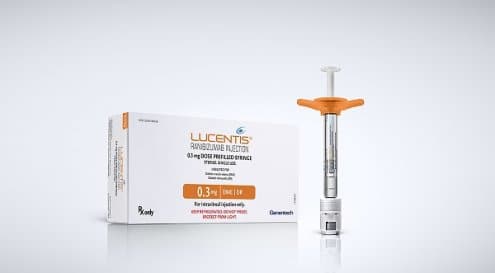Many patients hear about lucentis when vision changes start affecting daily tasks. This guide explains what ranibizumab does, how it is given, and what to expect during treatment.
Key Takeaways
- What it treats: Wet AMD, DME, RVO, and myopic CNV.
- How it works: Blocks VEGF to limit abnormal vessel growth.
- Dosing approach: Initiation monthly, then extend as appropriate.
- Safety watchpoints: Endophthalmitis, intraocular pressure, and inflammation.
Understanding lucentis: Mechanism and Indications
Ranibizumab is a monoclonal antibody fragment that inhibits vascular endothelial growth factor (VEGF). By reducing VEGF activity, it helps control leakage and edema (fluid swelling) in the retina. Approved uses include neovascular age-related macular degeneration (wet AMD), diabetic macular edema (DME), macular edema following retinal vein occlusion (RVO), and myopic choroidal neovascularization. The therapy aims to preserve central vision by limiting abnormal vessel growth.
Clinicians determine candidacy based on disease activity, imaging findings, and visual function. If you are wondering what is lucentis used for, it targets conditions where VEGF-driven leakage compromises the macula. For full labeling details, refer to the FDA prescribing information, which outlines indications and monitoring requirements (FDA prescribing information).
People with diabetes should understand how retinal swelling affects vision and function. For prevention context during national awareness events, see Diabetic Eye Disease Month for early detection reminders and risk factors.
Dosing and Administration: Regimens, Schedules, Monitoring
Initial treatment often uses loading visits to stabilize the retina, followed by adjustments based on disease activity. Many specialists tailor intervals using optical coherence tomography (OCT) and visual acuity changes. Discuss a plan that fits your clinical findings and visit feasibility. Your ophthalmologist will consider both eye-specific responses and overall health status.
Some patients benefit from flexible schedules that maintain vision while reducing clinic burden. Others require shorter intervals to control edema or neovascular leakage. Because visit timing is individualized, ask your retina specialist how lucentis dosing frequency may evolve over time given imaging and symptom trends.
Treat-and-Extend vs. Monthly Visits
A treat-and-extend strategy begins with monthly injections until the retina stabilizes, then gradually lengthens intervals if no recurrence appears. Monthly regimens may be used in high-risk phases or when disease activity returns. Physicians weigh the risk of undertreatment against the desire to reduce clinic time. OCT imaging helps detect fluid early, guiding whether to extend or shorten intervals. Over time, many patients find a stable cadence that balances control and convenience.
For device and supply context across ocular agents, see the Ophthalmology Products category for related in-clinic agents and administration accessories.
In-Clinic Procedure: Injection Steps and Follow-up
Intravitreal injections are office-based procedures performed under aseptic technique. The eye is anesthetized with drops or gel, cleansed with povidone‑iodine, and isolated with a lid speculum. The clinician then injects through the pars plana using a fine needle. Patients typically feel pressure, not pain, and the entire process is brief. Afterward, vision checks and pressure assessments help confirm safety.
Your doctor will determine the lucentis intravitreal injection dose and timing based on indication and response. Post-injection, you may experience mild irritation or floaters that resolve within days. Seek urgent care for severe pain, marked redness, vision loss, or photophobia. For vial handling and preparation examples in clinical settings, see the Lucentis Vial 10 mg/mL listing for component details and presentation format. For procedural safety recommendations, the American Academy of Ophthalmology provides technique guidance for sterile injections (AAO technique guidance).
Product Forms and Strengths: Vial and Prefilled Syringe
Ranibizumab is available as single-use vials and prefilled syringes. Prefilled syringes reduce preparation steps, minimize syringing errors, and standardize delivered volume. Clinics choose formats based on workflow, supply consistency, and staff familiarity. Your experience will be similar regardless of format because injection protocols follow the same sterile principles.
Some patients with diabetic eye disease may receive lucentis 0.3 mg, while others and most indications use a higher strength per current labeling. Dosing strength depends on indication and physician judgment. To see device components used in practice, review the Lucentis Prefilled Syringe page for device specifics and components.
Safety Profile: Adverse Reactions and Care
Common ocular reactions include conjunctival hemorrhage, eye irritation, floaters, and transient intraocular pressure elevation. Less common but serious risks include endophthalmitis (intraocular infection), retinal detachment, and intraocular inflammation. Systemic risks are low but may include arterial thromboembolic events in susceptible individuals. Immediate evaluation is warranted for severe pain, vision changes, or intense redness after an injection.
Patients often ask how long do lucentis side effects last. Mild surface irritation usually improves over one to two days, while floaters can persist briefly as gel disperses. Your team will advise on lubricating drops and warning signs. For a comprehensive list of adverse reactions and precautions, consult the manufacturer’s label, which outlines incidence and monitoring guidance (Genentech prescribing information).
For budgeting and refill planning perspectives, see Save on Lucentis Vials for practical considerations patients often weigh with their care teams.
Contraindications and Precautions
This therapy should not be used in eyes with active ocular or periocular infection. Hypersensitivity to ranibizumab or formulation components also precludes use. Recent intraocular inflammation, significant vitreous hemorrhage, or uncontrolled glaucoma may affect timing and monitoring. Your ophthalmologist will screen for conditions that raise risk and adjust the plan accordingly.
Before consenting to treatment, ask your physician to review lucentis contraindications and individualized precautions. Disclose recent cardiovascular events, bleeding disorders, anticoagulant use, pregnancy status, or plans to conceive. These details help refine risk assessment and post-procedure monitoring. Report new neurologic symptoms promptly, especially after recent injections, to ensure early evaluation.
Comparisons and Alternatives Across Anti-VEGF Options
Several anti-VEGF agents are used in retinal disease management. Aflibercept and faricimab may allow extended intervals in some cases, while bevacizumab is often used off-label. Some patients switch agents based on response, tolerability, or visit burden. Decisions weigh anatomy on OCT, clinical course, and safety considerations. Discuss the pros and cons with your retina specialist.
Head-to-head discussions often center on lucentis vs eylea when interval extension is desired. For a structured side-by-side overview, see Comparison: Eylea and Lucentis for dosing approaches and clinical contexts. Clinics may also evaluate the pre-filled syringe option from Beovu for its unique attributes and monitoring considerations. When discussing alternatives, your provider focuses on anatomy, treatment history, and risk tolerance.
Manufacturer, Access, and Labeling Details
Ranibizumab was developed through a collaboration involving Genentech and Novartis, with distribution differences by region. When evaluating coverage, your clinic may coordinate benefits investigations and prior authorizations. Official labels remain the most reliable source for indication, preparation, and safety procedures. Patients should rely on clinician guidance for personalized decisions.
If you need to know the lucentis manufacturer for documentation or support programs, your care team can confirm the appropriate contacts. Label updates may refine preparation steps or emphasize monitoring. For label updates that reflect current practice, consult the official documents maintained by the manufacturer or regulator (current prescribing information).
Pharmacology and Systemic Exposure
This medicine is a targeted vascular endothelial growth factor inhibitor, not a steroid. Molecular size limits systemic exposure, though trace levels can be detected temporarily. The clinical relevance of systemic exposure remains monitored, especially in patients with vascular risk. Providers weigh ocular benefits against rare, potential systemic events when planning long-term therapy.
Patients sometimes ask is lucentis a steroid because injections into the eye are also used for steroid delivery. If your doctor recommends a steroid injection instead, it reflects different disease mechanisms or adjunctive needs. Anti-VEGF agents reduce leakage, while corticosteroids modulate inflammation. For broader reading on injection-based eye care, the Ophthalmology Articles section covers related topics and safe-use practices.
Tip: Keep a simple symptom diary after injections. Brief notes about discomfort, vision fluctuations, or floaters can help your clinician tailor follow-up.
Maintaining follow-up and reporting symptoms early helps your team adjust care. Treatment goals focus on seeing comfortably, reducing edema, and preventing vision-threatening complications. Discuss individualized goals, clinic schedules, and monitoring that fit your situation and support daily life.
Medical disclaimer: This content is for informational purposes only and is not a substitute for professional medical advice.



